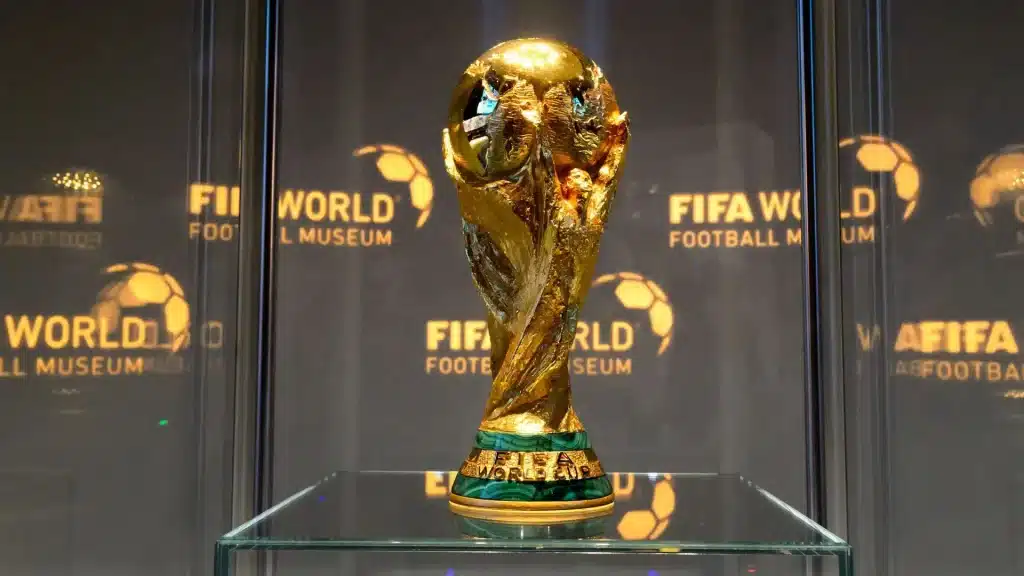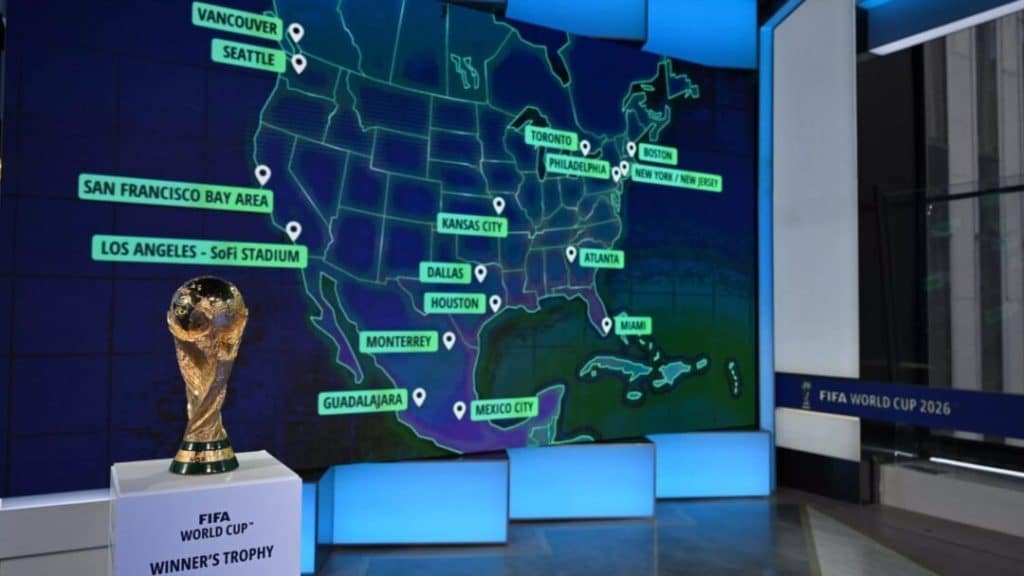The FIFA World Cup 2026 is set to be a grand affair, hosted across the United States, Canada, and Mexico. While the combined North American bid was praised for its infrastructure and financial readiness, many football purists and global fans have voiced concerns—particularly about the United States’ role as a co-host. Despite the country’s impressive stadiums and logistical capacity, there’s a looming sense that the U.S. could disappoint on the cultural and atmospheric front. And frankly, that worry isn’t unfounded.
Here’s a deep dive into why the United States might not live up to the emotional, cultural, and sporting expectations of the 2026 World Cup, and how the lack of traditional football culture, government support, and demographic prioritization may let the global game down.
🇺🇸 1. Lack of Deep-Rooted Football Culture
Let’s call it like it is: football (or soccer, as it’s called in the U.S.) is not a cultural cornerstone in America.
Compare the Passion:
-
In Argentina, a World Cup win leads to days of public celebration, nationwide parades, and mass emotional outpouring.
-
In Germany, France, Brazil, or Senegal, football is in the DNA—a subject of national conversation, childhood dreams, and fierce local loyalty.
-
In the U.S.? A World Cup game can be sandwiched between a baseball double-header and an NBA playoff, both of which might draw more media attention.
Americans consume sports differently. The culture is built around NFL, NBA, MLB, and college football. While the MLS (Major League Soccer) has grown in the past decade, it still lags in terms of intensity, quality, and cultural significance. Youth participation is high, but soccer remains a “starter sport”—often dropped once American football or basketball becomes viable.
The Result?
Expect tepid atmospheres, less organic crowd energy, and possibly poor stadium etiquette (think fans arriving late or leaving early). That electricity, that rhythm of the game—so palpable in Marseille, Lagos, or São Paulo—will likely feel synthetic in U.S. stadiums.

💼 2. A Government That Doesn’t Really Prioritize Football
Unlike many host nations where the government heavily involves itself in national football development, the U.S. government maintains a detached relationship with the sport.
-
There’s no football ministry, no national push for development.
-
Funding for grassroots or youth development is minimal compared to other sports.
-
When the U.S. failed to qualify for the 2018 World Cup, there was no political reckoning, unlike in countries where such failures spark national crises.
Governments play a pivotal role in creating a football environment, from grassroots support to nationwide campaigns. In the U.S., there’s no unified message that football is a national priority—not even during World Cup years.
This lack of cultural-political synergy will be felt in 2026. Don’t expect the kind of national fervor we saw in Russia (2018), South Africa (2010), or even Japan/South Korea (2002). The American response will be fragmented and performative—marketing over meaning.
📉 3. Demographics and Media Don’t Center Football
America is a country of diverse interests—but when it comes to sports, football is still fringe. The average American sports fan is more likely to know LeBron James’ stats than Messi’s international goals.
Media Obsession with Domestic Sports
American media is sports-obsessed—but not with football:
-
NFL dominates the fall and winter
-
NBA and college basketball rule spring
-
MLB and NHL battle it out for summer attention
-
Football coverage is often relegated to off-hours or niche channels
Even when football is featured, it’s usually Euro-centric or Messi vs. Ronaldo debates. Domestic league games or CONCACAF tournaments rarely get attention unless there’s controversy.
In 2026, unless the U.S. Men’s National Team performs shockingly well, the average TV viewer might not even tune in past the group stage. Expect coverage to peak only for final matches—and even then, only if the U.S. is involved.
🎟️ 4. Ticket Prices, Commercialization, and the “Event Culture”
Americans have perfected the art of turning everything into an event—and that’s not always a good thing for football.
The World Cup is a celebration of culture, grit, rivalry, and emotion. But in the U.S., it risks becoming just another “bucket list” item:
-
Corporate ticket grabs will dominate.
-
Prices will be astronomical—locking out many real fans, especially those from South America and Africa.
-
Tailgates will have more focus on beer brands than team chants.
This risks a plastic atmosphere, where people show up for selfies and Instagram stories rather than to sing for 90 minutes. FIFA has already been criticized for its partnership with American commercialism, and the U.S. hosting could accelerate that soulless trend.

⚽ 5. The U.S. Still Doesn’t Understand Football
Yes, really.
Despite years of exposure, many Americans still:
-
Don’t understand the offside rule.
-
Think a draw is boring and want extra time every game.
-
Expect constant scoring like in basketball.
-
Call it “soccer” and get annoyed when corrected.
This ignorance can create weird commentary, dumbed-down coverage, and embarrassing hot takes on major media networks. And while some effort has gone into “educating” American fans, you can’t fast-track a century of football culture in a few World Cup cycles.
🏟️ 6. Amazing Infrastructure, But At What Cost?
The U.S. has state-of-the-art stadiums, no doubt. But many were built for NFL, not football:
-
Field dimensions are sometimes awkward.
-
Turf conditions may not meet football standards.
-
Seating and sightlines are optimized for American football, not the beautiful game.
Add to that the travel distances—teams and fans will have to cross multiple time zones to follow matches. Compare that to compact World Cups like Germany 2006, where a fan could drive or train between host cities in hours.
Logistics matter. And in the U.S., they’ll feel more like a business trip than a festival.
🤖 Final Thoughts: America Will Execute, But Won’t Inspire
Let’s be clear: the 2026 World Cup won’t be a disaster logistically. The U.S. knows how to host big events. Stadiums will be ready, security will be tight, and sponsors will be satisfied.
But that’s not the point.
A World Cup is supposed to ignite the soul of the game, to give us unforgettable atmospheres, organic fan stories, and cultural immersion. In the U.S., we risk getting a sanitized, corporate, shallow version of what the World Cup is meant to be.
Football isn’t just about the game—it’s about the people. The chants. The flags. The tears. The noise. The memories.
And in 2026, the U.S. might deliver everything… except the heart.

🧠 A Few Counterpoints (To Be Fair)
-
Youth Soccer Participation is growing rapidly.
-
American cities like Atlanta, Seattle, and Portland have amazing MLS atmospheres.
-
The U.S. Women’s Team has cultivated a genuine football culture on its side.
Still, these bright spots don’t erase the broader issues. They’re exceptions, not the rule.
💬 Conclusion
The 2026 World Cup could have been a once-in-a-generation global unifier. But the U.S. co-hosting it feels more like a business pitch than a spiritual celebration. The culture just isn’t there yet. And while the tournament might succeed by some metrics, it may leave the world of football fans emotionally unsatisfied.
Want this turned into a shareable Medium article, or styled for a blog CMS? I can help format it that way too.
You may like this: Transfer Round-Up: Arsenal Chase Koundé, United Target Schick, and Coman Considers Premier League Move






